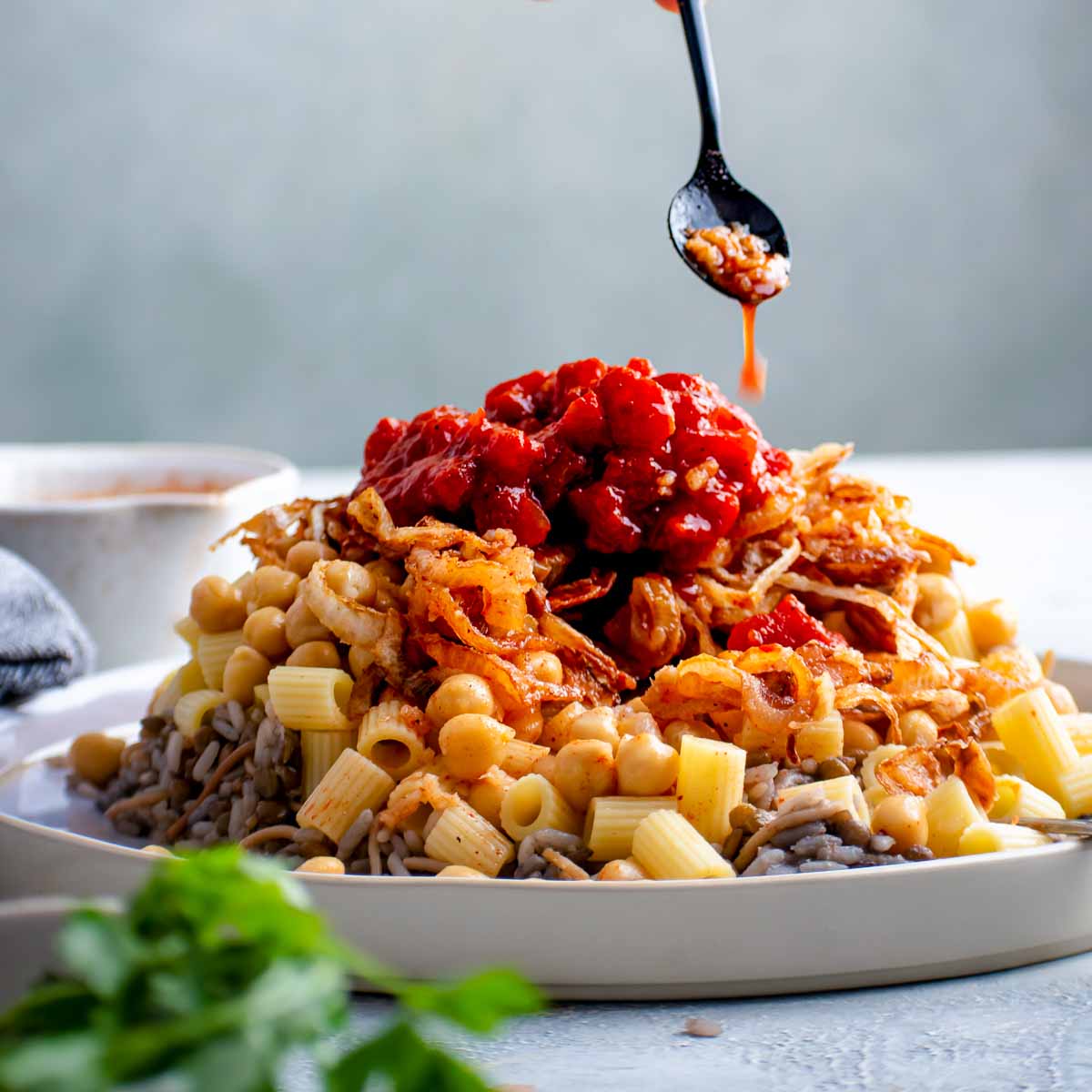At a Glance
- African cuisine is gaining global recognition through iconic regional dishes.
- Street foods like bunny chow and koshari define authentic local flavors.
- Traditional staples highlight Africa’s cultural heritage and culinary diversity.
Africa’s culinary heritage is as vast and diverse as the continent itself.
From the bustling streets of Lagos to the spice-filled air of Zanzibar, food here tells stories of history, migration, resilience, and celebration.
While much of the world knows African culture through its music, art, and fashion, its cuisine remains one of the most underexplored treasures in the global dining scene.
At its core, African food is a fusion of indigenous ingredients, ancient cooking methods, and influences from centuries of trade with Asia, Europe, and the Middle East.
The result is a mosaic of dishes that range from hearty stews to fiery street food, each deeply rooted in tradition yet endlessly adaptable.
Whether it’s the slow-simmered flavors of Moroccan tagines, the aromatic Cape Malay curries of South Africa, or the beloved jollof rice of West Africa, the continent’s plates offer something unforgettable.
In recent years, African cuisine has been gaining international recognition, thanks to a growing number of chefs, food entrepreneurs, and travelers showcasing its bold flavors.
Yet, many of its most iconic dishes are still best experienced where they were born — cooked over open flames, shared at family gatherings, or served from bustling street stalls.
This curated list highlights 15 African dishes that define the continent’s flavor.
From Mozambique’s piri piri chicken to Zimbabwe’s kapenta with sadza, these meals capture not just the taste of Africa, but also its history and identity.
For travelers, food lovers, and cultural explorers, they are a must-try introduction to Africa’s gastronomic landscape.
Pap en vleis / Shisa nyama, South Africa
Barbecued meat and maize porridge are central to Southern African food culture.
In South Africa, the braai is more than just a meal — it’s a national pastime.
“Pap en vleis,” meaning maize porridge and meat, pairs perfectly grilled beef, chicken, or boerewors (spiced farmer’s sausage) with hearty starches.
Add chakalaka relish and a local beer, and you’ve got South Africa on a plate.
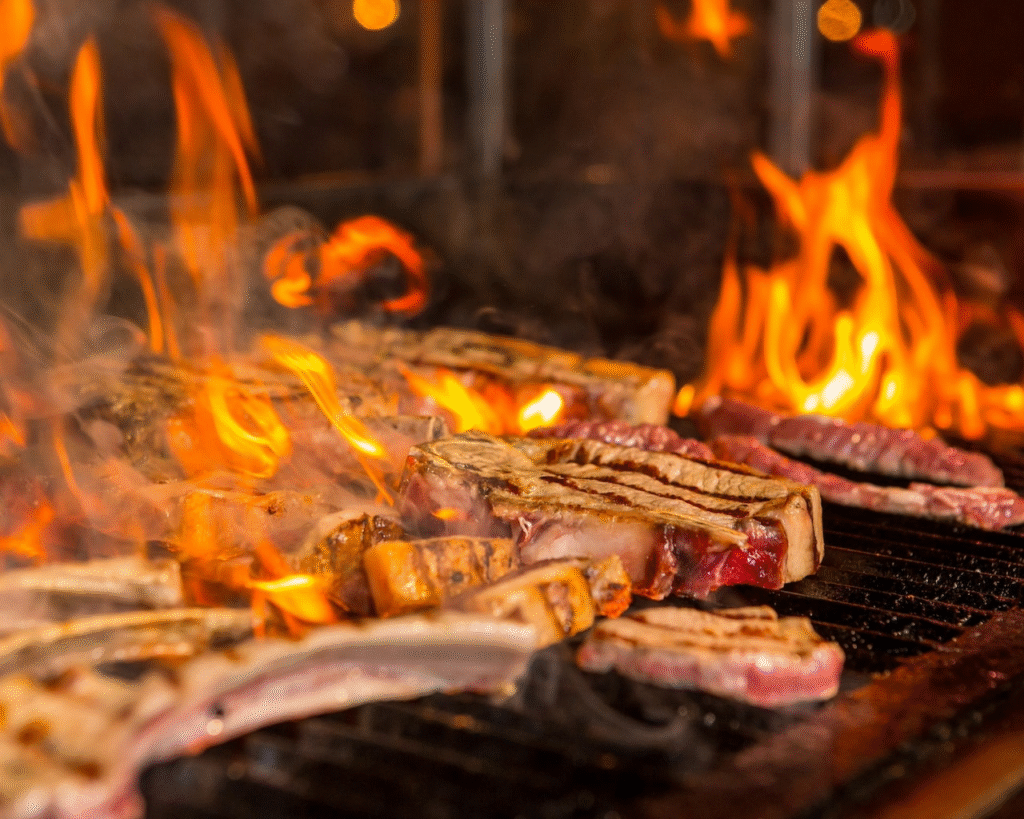
Piri Piri Chicken, Mozambique
Mozambique blends Portuguese, Arab, and African influences, and nowhere is that more evident than in its famous piri piri chicken.
Marinated in lime, garlic, coconut, and fiery piri piri sauce, the dish is smoky, spicy, and unforgettable.
Often served with matapa — cassava leaves in peanut sauce — it’s a staple for both locals and visitors in Maputo.
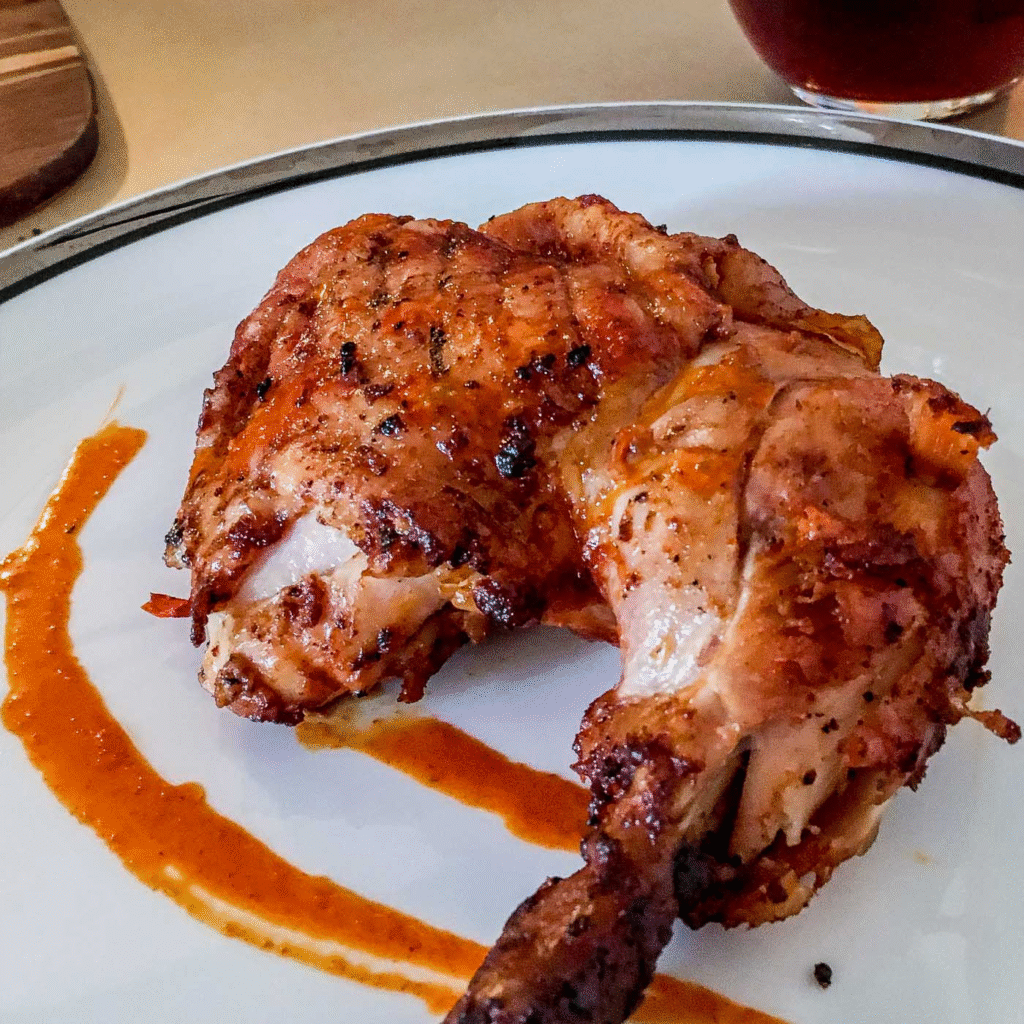
Jollof Rice & Egusi Soup, Nigeria
Few dishes ignite as much debate as jollof rice, beloved across West Africa.
In Nigeria, it’s a party essential — a tomato-based rice dish often paired with fried plantains, suya kebabs, or egusi soup made with melon seeds.
Its global influence is undeniable, with many linking it to Cajun jambalaya.

Bunny Chow, South Africa
A Durban street-food legend, bunny chow is a hollowed-out loaf of bread stuffed with spicy curry.
Originally created by Indian laborers in the 19th century, it has become a South African favorite.
The best versions are still found in Durban, where curry-filled loaves are sold at takeaway shops and street stalls.
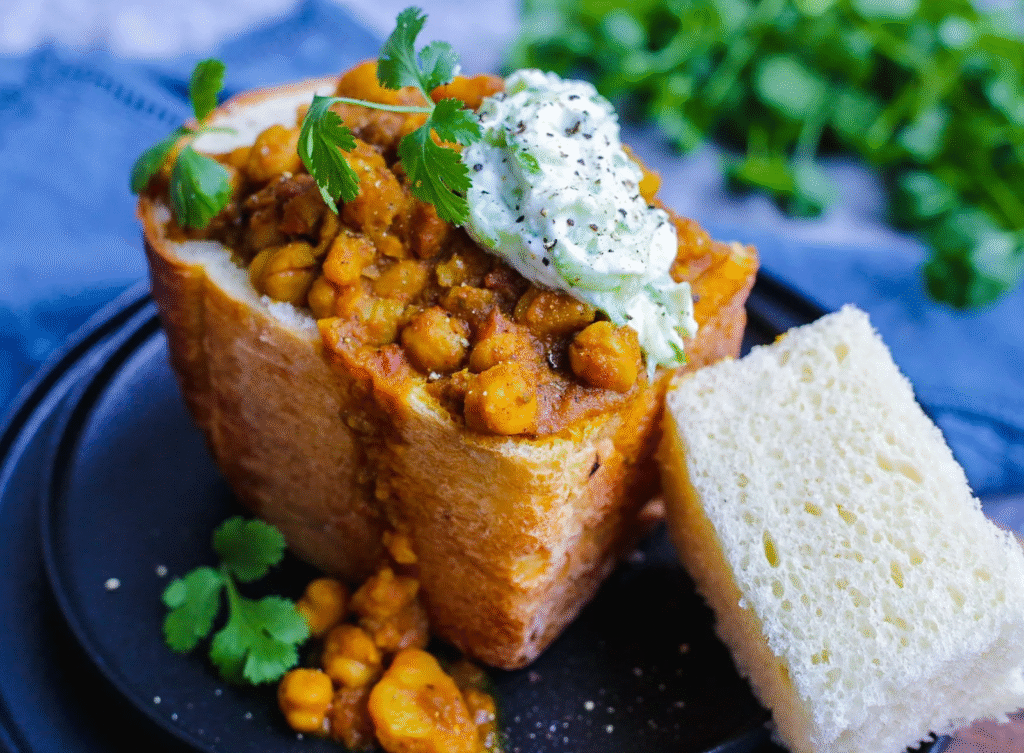
Kapenta with Sadza, Zimbabwe
Kapenta, small freshwater fish from Lake Kariba, are a beloved Zimbabwean staple, often fried until crisp or stewed with tomatoes and onions.
Served with sadza, a stiff maize porridge, the dish reflects the country’s reliance on maize as a dietary foundation.
Traditionally eaten with the hands, kapenta remains a must-try for visitors.
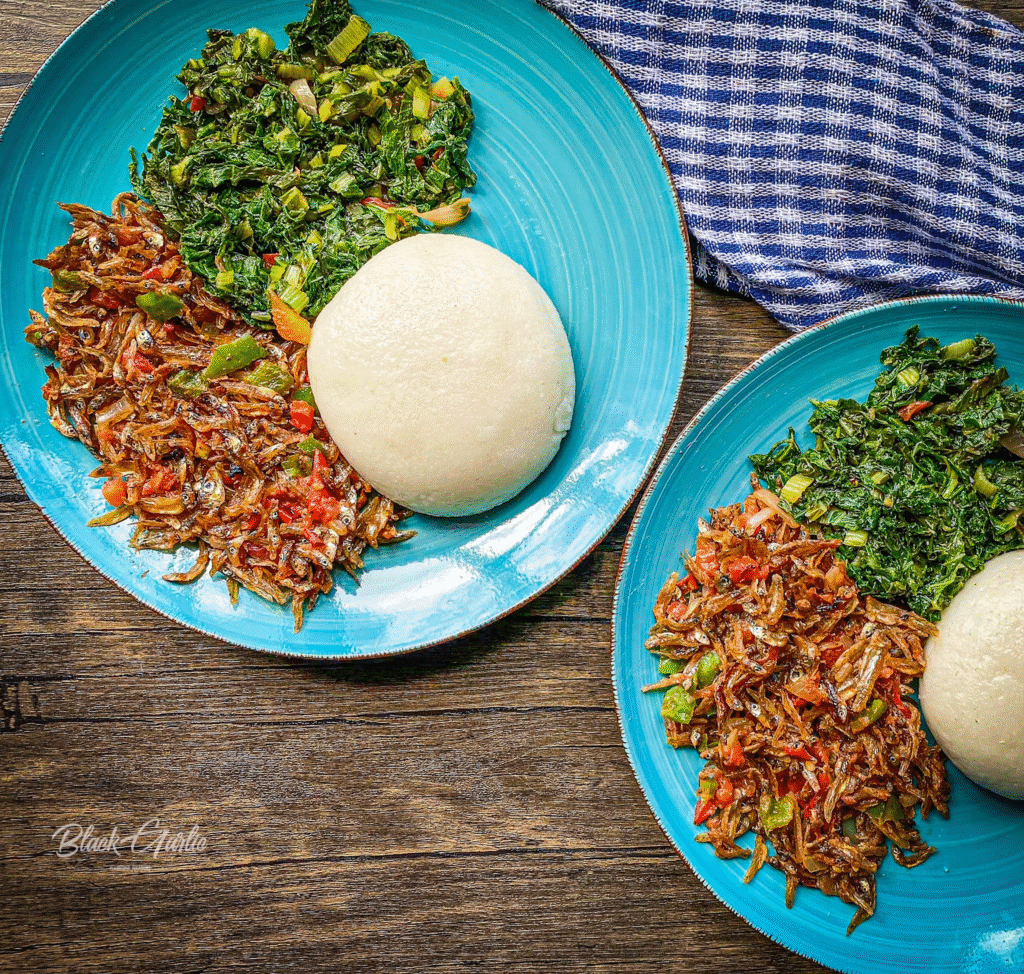
Chambo with Nsima, Malawi
Malawi’s national dish centers around chambo, a freshwater fish from Lake Malawi, usually grilled and served with nsima, a maize porridge similar to pap and sadza.
It is complemented with ndiwo, a relish made of pumpkin leaves, cassava leaves, and peanuts.
Chambo is so iconic that it is considered a symbol of Malawian identity.

Namibian Venison, Namibia
Namibia is known for its game meats — kudu, springbok, and gemsbok — often grilled or stewed and served with staples like oshifima (maize porridge).
With strong German influences, dishes are paired with sauerkraut, sausages, and local beer.
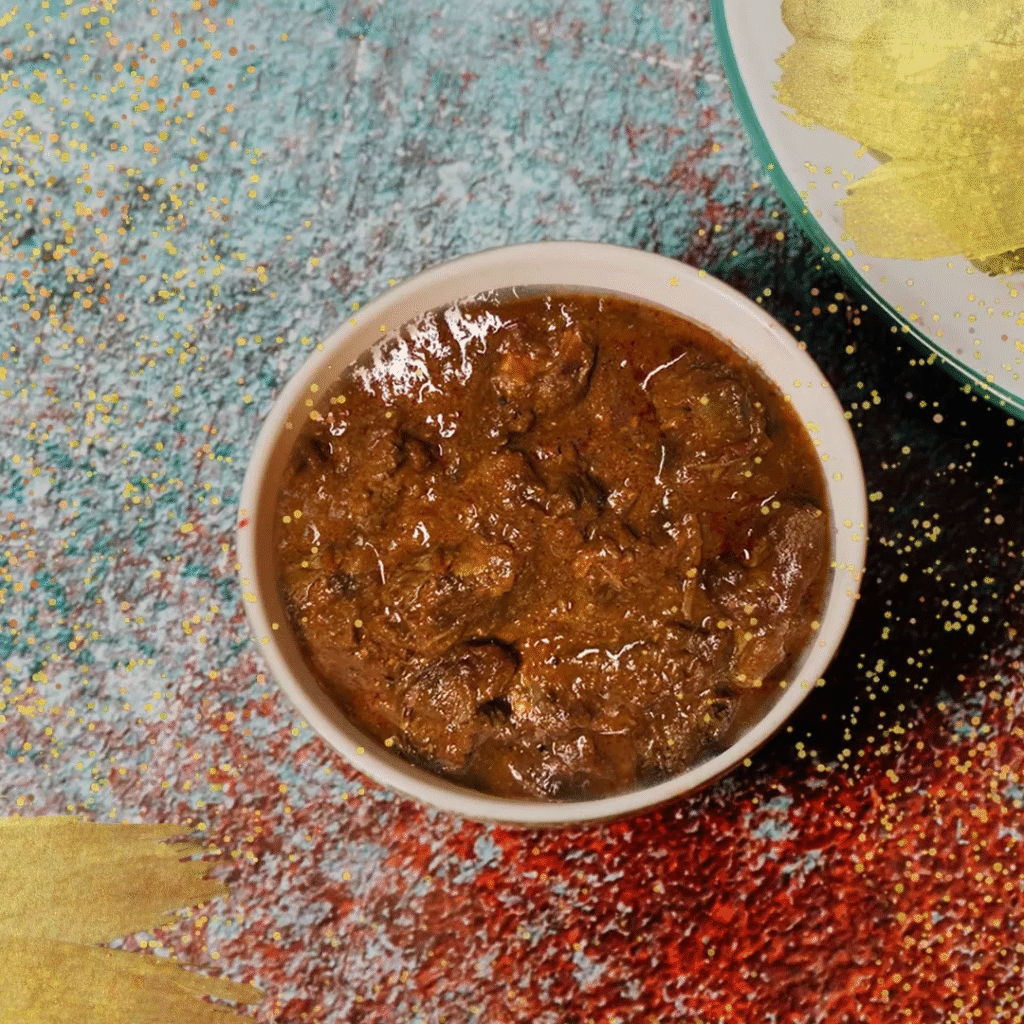
Muamba de Galinha, Angola
A spicy Angolan chicken stew, muamba de galinha uses palm oil, garlic, chili, and okra.
Its variations stretch across Central Africa, including Congo’s poulet moambé and Gabon’s nyembwe chicken.
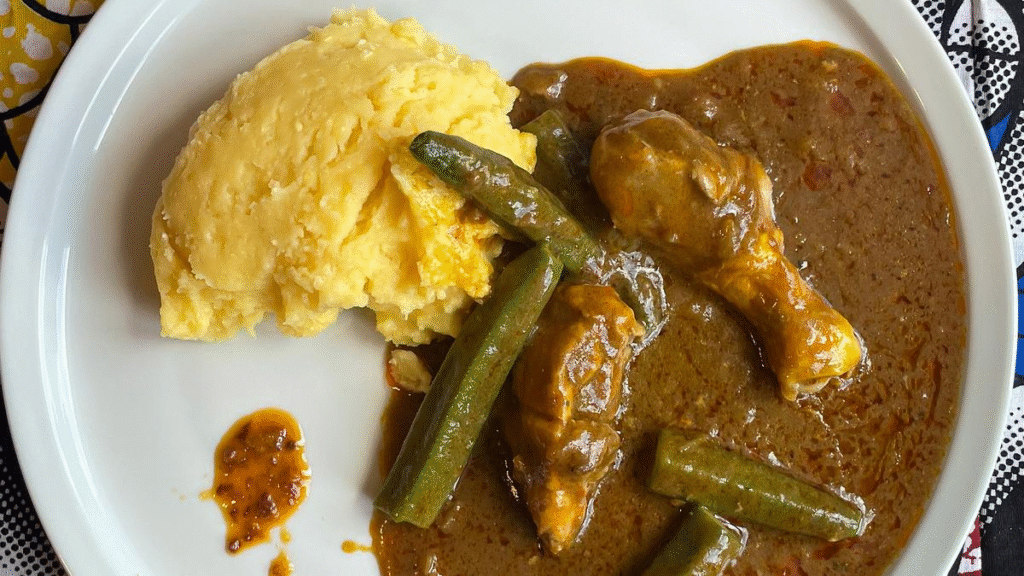
Cape Breyani, South Africa
A jewel of Cape Malay cuisine, breyani layers rice, lentils, spiced meat, and fried onions into a fragrant one-pot feast.
Originating from Southeast Asia, it remains a staple for celebrations in Cape Town.
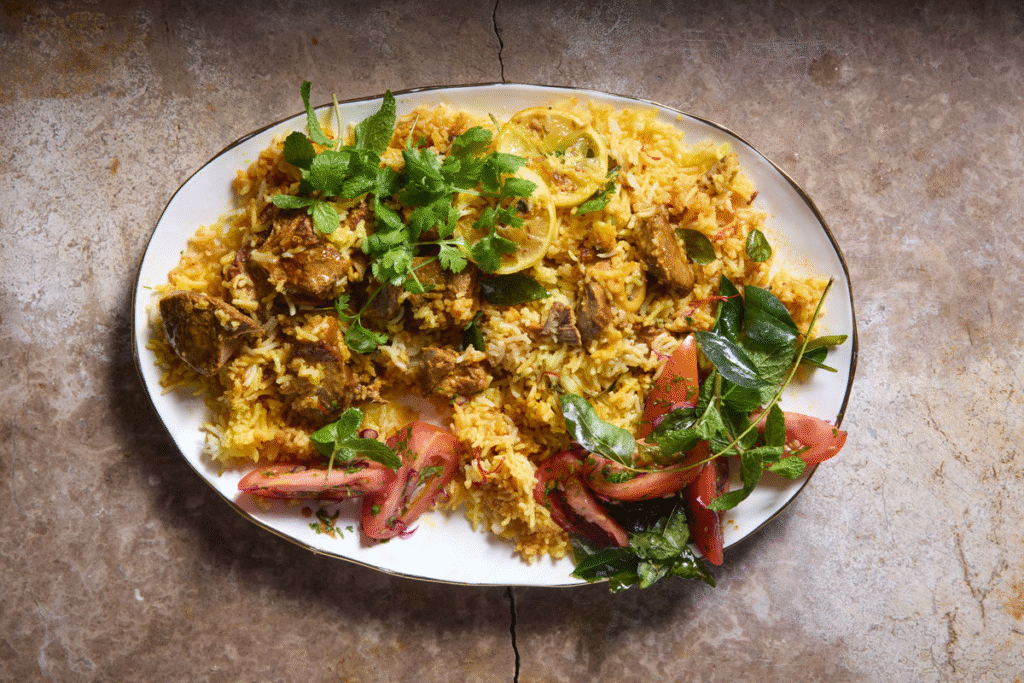
Zanzibari Biryanis and Pilaus, Zanzibar
Known as the “Spice Island,” Zanzibar offers richly spiced biryanis and pilaus infused with cardamom, cumin, and cloves.
Paired with kachumbari (onion and tomato salad), these dishes embody East Africa’s Indian Ocean heritage.
Nyama na Irio, Kenya
A Kikuyu specialty turned Kenyan classic, irio combines mashed potatoes, peas, corn, and beans, often served with roasted meat to form nyama na irio.
Another Kenyan staple is sukuma wiki, collard greens sautéed with onions and spices, traditionally eaten with ugali (maize porridge).
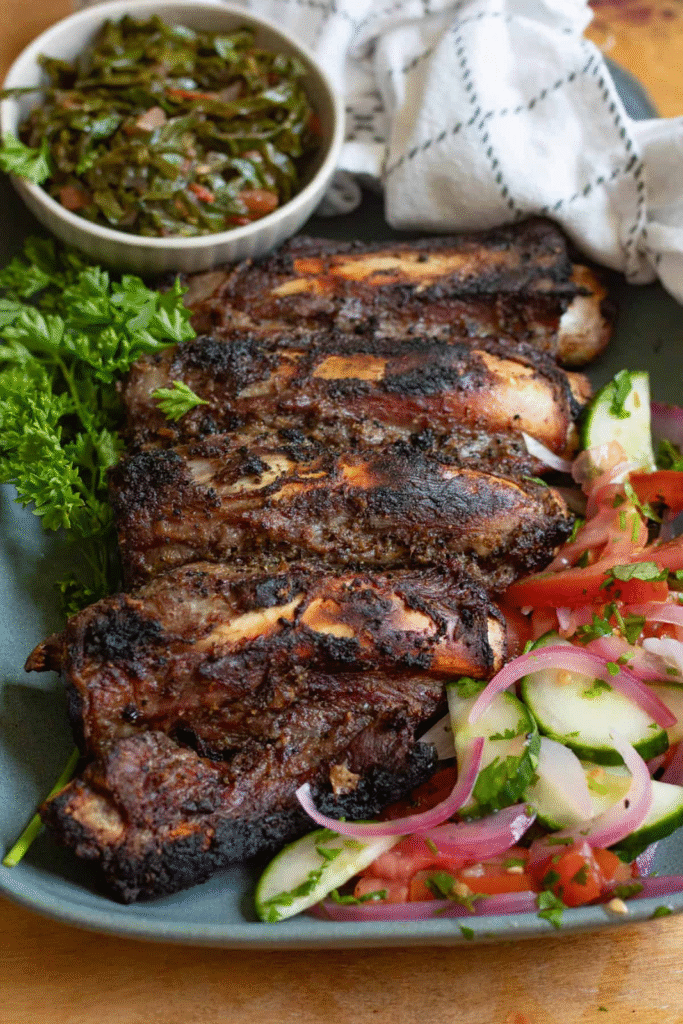
Koshari, Egypt
Egypt’s most famous street food, koshari, blends rice, lentils, macaroni, and chickpeas topped with spicy tomato sauce and fried onions.
Filling and affordable, it is a working-class favorite that has become a national obsession.
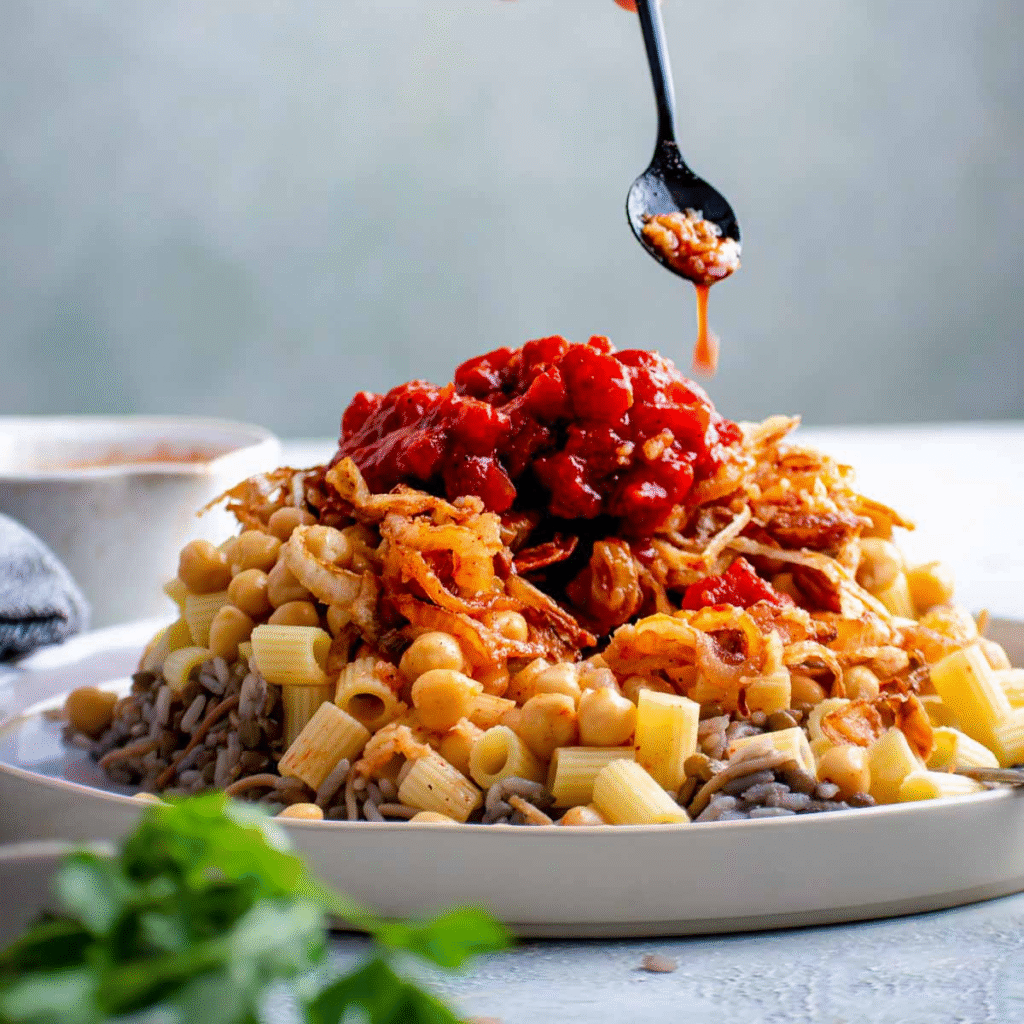
Potjiekos and Stew, South Africa
Potjiekos, meaning “small pot food” in Afrikaans, is a slow-cooked stew made in cast-iron pots over open flames.
Popular at social gatherings, it includes beef, chicken, or lamb, often accompanied by samp and beans, dumplings, or wild greens.
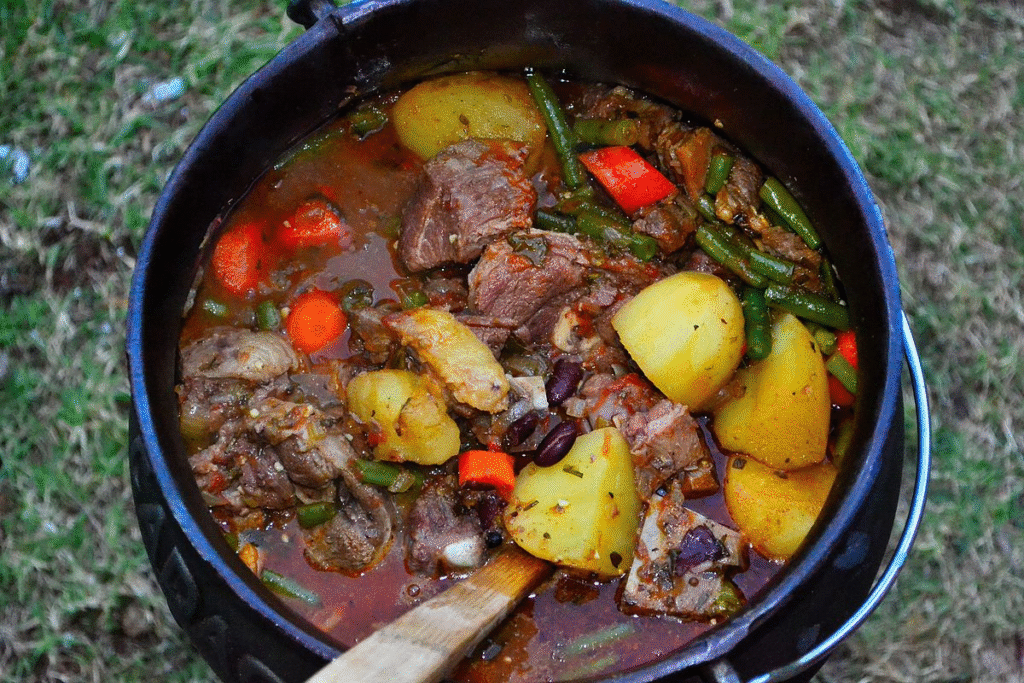
Pastilla (B’stilla), Morocco
A sweet-and-savory Moroccan pie, pastilla layers pigeon or chicken with spiced nuts, eggs, and flaky pastry.
Traditionally served at feasts, it embodies the luxury and complexity of Moroccan cuisine.
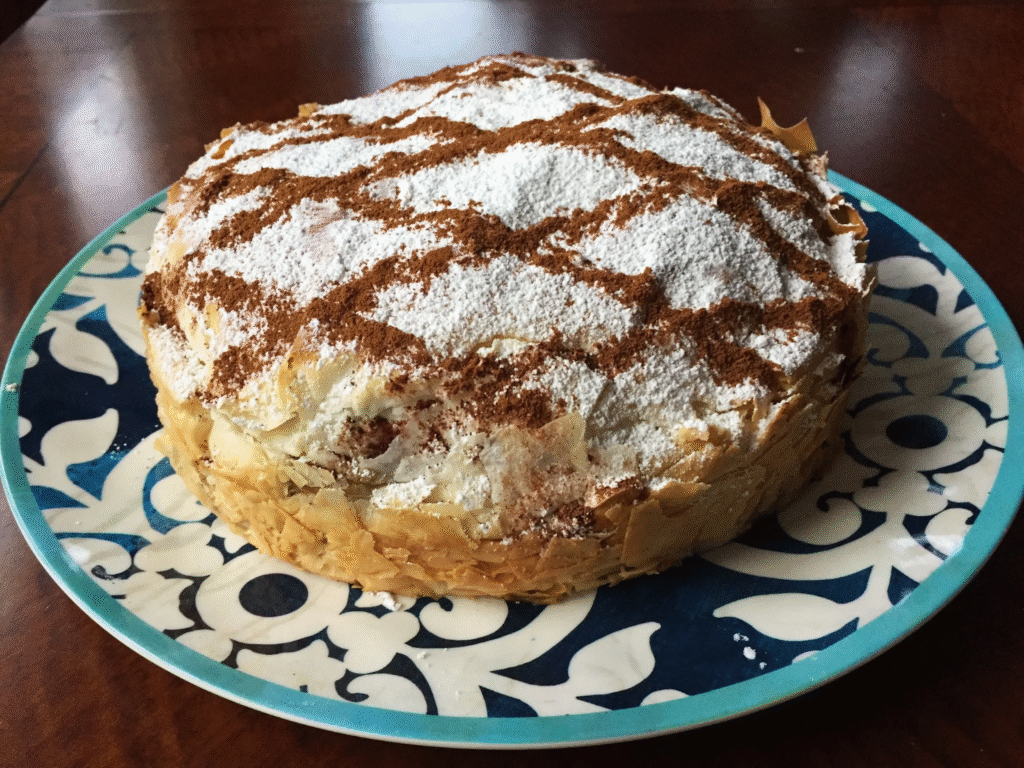
Ful Medames, Egypt
Dating back to the pharaohs, ful medames is made with slow-cooked fava beans seasoned with olive oil and spices.
Often eaten for breakfast with pita bread and eggs, it remains one of Egypt’soldest and most beloved dishes.
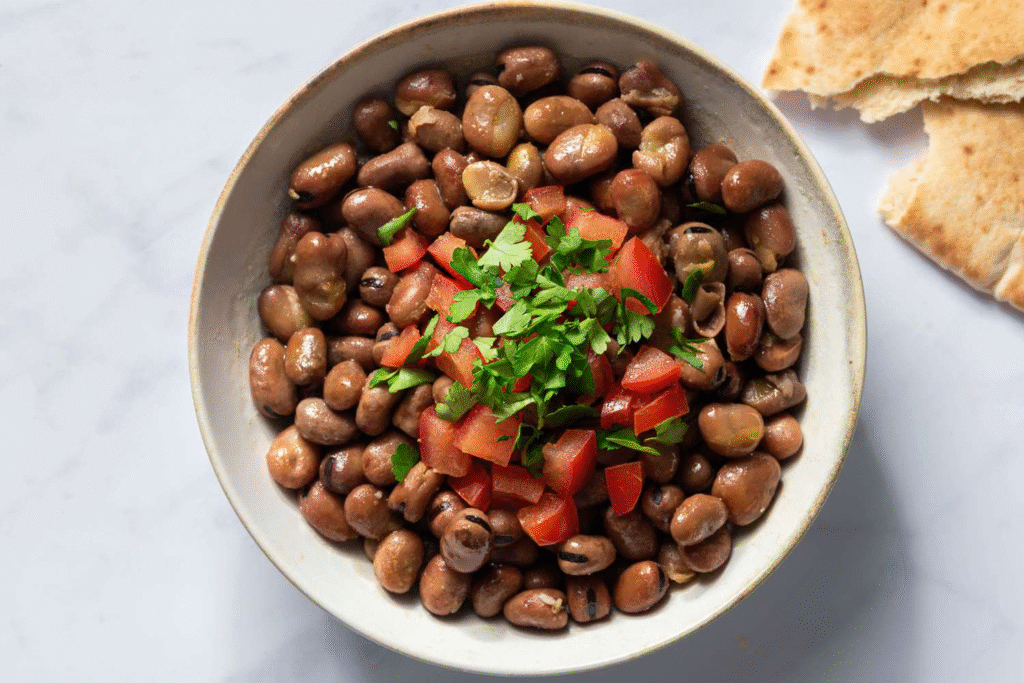
African cuisine is a rich tapestry of flavors that deserves greater global recognition.
From street food favorites like bunny chow and koshari to intricate feasts like pastilla and breyani, these 15 dishes showcase the diversity of the continent’s food culture.
For travelers, they represent more than meals—they are cultural experiences that connect communities, history, and heritage.

